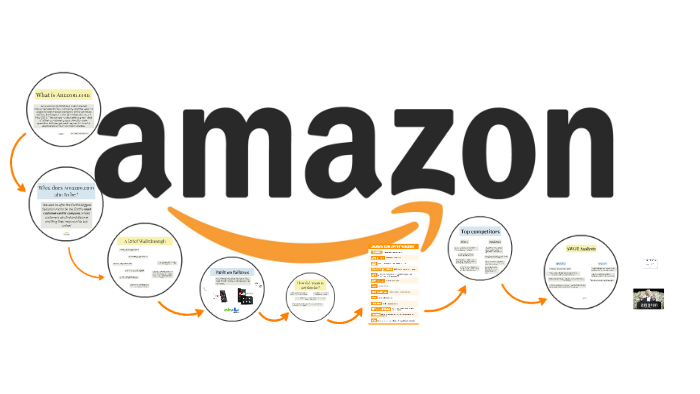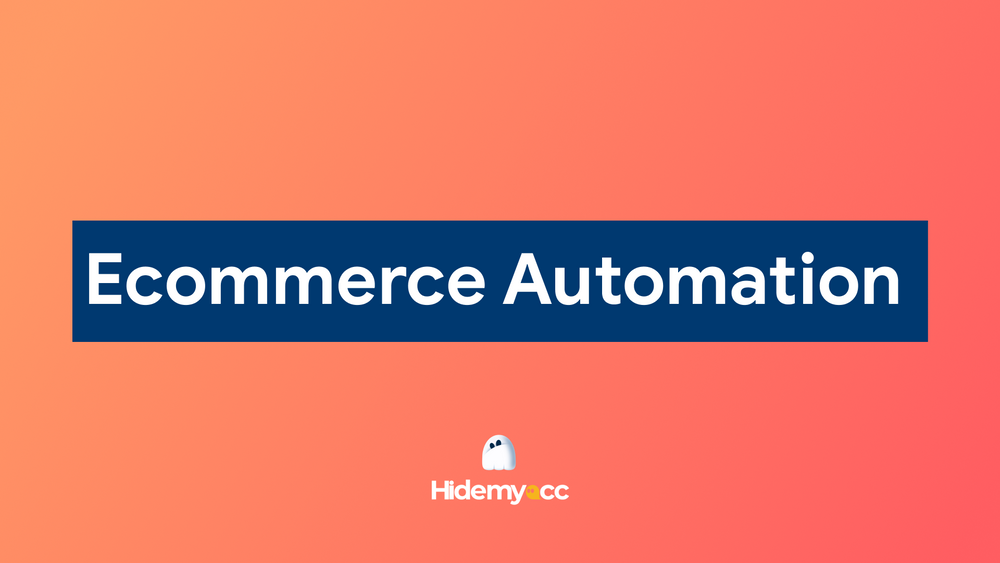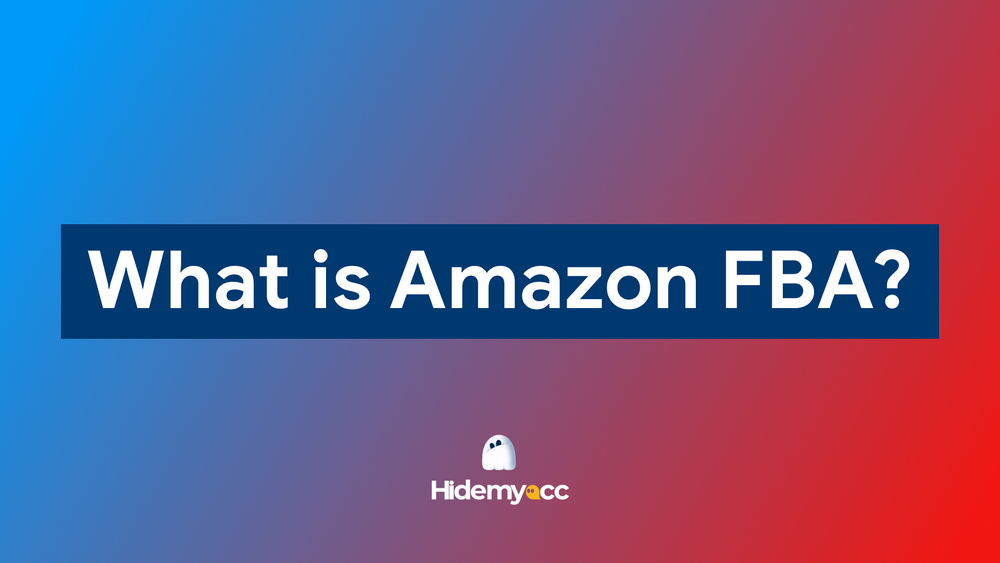In today’s rapidly growing e-commerce landscape, choosing the right platform for your online business is crucial. Among the most popular options are Shopify and Amazon, two giants that dominate the industry. Each offers a unique set of benefits, but understanding the differences between them can help you make a more informed decision.
Whether you are starting a new online store or planning to expand your existing business, it’s essential to evaluate the key features, costs, and opportunities of both Shopify and Amazon. In this article, we will compare these two platforms in-depth to help you determine which one is the best fit for your business model.
1. Shopify vs Amazon: Overview
Both Shopify and Amazon are powerful e-commerce platforms, but they serve different needs for online businesses. Let's start by examining what each platform offers.
1.1. What is Shopify? Is Shopify like Amazon?
Shopify is a cloud-based e-commerce platform that allows businesses to create their own online store. It offers a user-friendly interface, making it simple for entrepreneurs and small businesses to set up and manage their shops without needing extensive technical knowledge. Shopify provides a wide range of customizable templates, various payment gateway integrations, and a vast app marketplace to enhance the functionality of your store.

Shopify’s primary appeal lies in the control it gives to store owners. You can fully brand your website, customize the design, and have a tailored shopping experience for your customers. The platform is best suited for businesses that want to build long-term customer relationships and create a unique, branded experience.
>>> Articles on Shopify topic:
- Dropshipping on Shopify – Your A-Z guide to success
- How to manage Shopify multiple stores and maximize profit
1.2. What is Amazon and how does it work?
Amazon, on the other hand, is the world’s largest online marketplace, where third-party sellers can list and sell products alongside Amazon’s own inventory. With millions of customers already shopping on Amazon daily, it offers sellers instant access to a massive customer base. Sellers can leverage Amazon's powerful logistics infrastructure, including its Fulfillment by Amazon (FBA) service, which handles storage, packing, and shipping.

The main appeal of selling on Amazon is the vast audience it gives sellers. For businesses that want immediate visibility and don’t want to invest heavily in driving traffic to their stores, Amazon’s ready-made marketplace is ideal. However, it comes with some limitations in terms of branding and customer control.
>>> Articles on Amazon topic:
- Open multiple Amazon seller accounts
- Merch by Amazon: How to Make Money Selling Custom Products
- Top 17 Amazon SEO tools that help you rank: Boost your sales now!
2. Shopify vs Amazon: Key differences
Understanding the key differences between Shopify and Amazon will help you make an informed decision about which platform best suits your business needs.
2.1. Control over your store
One of the biggest differences between Shopify and Amazon is the level of control you have over your store.
- Shopify provides complete control over the design, branding, and customer experience. As a store owner, you can choose from a variety of themes, add custom features using apps, and personalize your website to reflect your brand. This level of control allows you to create a unique shopping experience for your customers.
- Amazon, in contrast, limits the control you have over your store. While you can list products and create a seller profile, your store is part of Amazon’s larger marketplace. Customization options are limited, and you will have to abide by Amazon’s rules and regulations.
2.2. Fees and costs
The cost structure of Shopify and Amazon differs significantly, and understanding these differences is key to choosing the right platform.
- Shopify operates on a subscription-based model. You pay a monthly fee for using the platform, with different plans available depending on the features you need. Additionally, Shopify charges a transaction fee for every sale made through the platform, unless you use Shopify Payments (its built-in payment processor). Other potential costs include fees for premium themes, apps, and add-ons.
- Amazon has a different pricing model, focusing on commissions and fees. There are two types of seller accounts: individual and professional. Individual accounts do not have a monthly fee but incur a per-item selling fee, while professional accounts charge a monthly subscription fee. Additionally, Amazon takes a percentage of each sale as a referral fee, and if you use Amazon's FBA service, you will also incur storage and fulfillment fees.
2.3. Customization and design
Another major difference between Shopify and Amazon is the level of customization available for your store.
- Shopify excels in this area by allowing complete flexibility. You can choose from a range of templates or even create a custom design using coding skills. This means you can tailor the look and feel of your store to match your brand perfectly.
- Amazon, however, offers limited customization. While you can optimize your product listings with detailed descriptions, high-quality images, and a catchy title, your store is part of the larger Amazon platform. This means you can’t make major design changes, and your branding is not as prominent as it would be on Shopify.
2.4. Marketing and traffic
Traffic generation is another area where Shopify and Amazon differ.
- Shopify requires you to actively drive traffic to your store. You will need to invest in SEO, pay-per-click advertising, social media marketing, and other strategies to attract customers. While this gives you more control over your marketing efforts, it also means that you need to dedicate time and resources to building your customer base.
- Amazon, on the other hand, provides built-in traffic. With millions of shoppers visiting the site daily, you are immediately exposed to a huge customer base. However, this comes with the downside of increased competition from other sellers. While Amazon’s advertising options can help you stand out, you are still competing with other businesses offering similar products.
3. Shopify vs Amazon: Pros and cons
Now that we’ve explored the main differences, let’s dive deeper into the pros and cons of both platforms to help you make a more informed decision.
3.1. Which is the pros and cons of Shopify?
Shopify is a common platform for E-commerce sellers. So, which is the pros and cons? Let’s find out.
Pros:
- Complete control: With Shopify, you have full control over your store’s design, branding, and customer experience.
- Scalability: Shopify is designed to grow with your business. Whether you’re a small startup or a large enterprise, Shopify can accommodate your needs.
- Extensive app marketplace: Shopify offers a wide range of apps and integrations that can help you expand your store’s functionality, from marketing tools to inventory management solutions.
- Customer support: Shopify provides 24/7 support to help you with any issues or challenges you encounter.
Overall, Shopify is a great platform for beginners to start their e-commerce business. However, in addition to the cons listed above, it's also important to consider the potential pros that come with using this platform for your business.
Cons:
Wanna start your business? Are you preparing for these “disadvantages”?
- Traffic Generation: You are responsible for driving traffic to your site, which requires time, effort, and investment in marketing.
- Costs: Monthly subscription fees, transaction fees, and additional costs for apps can add up, especially for small businesses.
- Learning Curve: While Shopify is user-friendly, it still requires some learning and adjustment, especially when setting up advanced features.
3.2. Amazon’s pros and cons
As one of the largest E-commerce sites in the world, Amazon is a “fertile land” for those who want to start a business. However, like any platform, you need to learn about the pros and cons before starting a business.
Amazon: Pros
- Built-in traffic: Amazon’s massive customer base gives you immediate exposure to millions of potential buyers.
- Ease of use: Setting up an Amazon store is simple and doesn’t require much technical knowledge.
- FBA Services: Amazon’s Fulfillment by Amazon (FBA) service allows you to store your products in Amazon’s warehouses, where they handle shipping, returns, and customer service.
Amazon: Cons
- Limited branding: With Amazon, your branding options are minimal. Your store is part of a larger marketplace, and you don’t have the same flexibility as you would with Shopify.
- High fees: Amazon charges various fees, including referral fees and FBA charges, which can significantly eat into your profit margins.
- Intense competition: Since you are selling in a marketplace with many other sellers, standing out can be challenging, especially if you are offering a product that has a lot of competition.
4. When should you choose Shopify?
Shopify is an excellent choice for entrepreneurs who want full control over their branding and customer experience. If you’re looking to build a unique online store with tailored features and scalability, Shopify is the better option. It is also the ideal choice if you want to build long-term relationships with your customers through personalized experiences.
You should consider choosing Shopify if:
- You want to create a fully branded online store.
- You are willing to invest in marketing and driving traffic to your site.
- You’re looking for long-term growth and scalability.
5. When should you choose Amazon?
If you’re looking to reach a massive customer base quickly, Amazon is the way to go. It’s especially useful for businesses that want to sell products without worrying about setting up and marketing a full-fledged online store. Amazon is also the best option if you want to take advantage of Amazon’s logistics and fulfillment services.
You should consider choosing Amazon if:
- You want instant access to millions of customers.
- You’re looking for a low-maintenance platform with built-in traffic.
- You’re comfortable with the high fees and lack of control over your branding.
6. Combining Shopify vs Amazon: Is it possible?
Instead of choosing between selling on Shopify or Amazon, why not consider combining both platforms to help scale your business?
Below are the comparison table between Shopify vs Amazon:
|
Feature |
Shopify |
Amazon |
|
Platform type |
Standalone e-commerce store |
Online marketplace |
|
Traffic source |
You drive traffic (SEO, ads, etc.) |
Built-in traffic from Amazon's marketplace |
|
Customization |
Full control over store design and branding |
Limited customization; part of Amazon marketplace |
|
Seller fees |
Monthly subscription + transaction fees |
Seller fees + Amazon's referral and FBA fees |
|
Fulfillment |
Self-fulfillment or third-party fulfillment |
Amazon FBA (Fulfillment by Amazon) |
|
Integration tools |
Apps and third-party tools to sync with Amazon |
Shopify’s Amazon integration for cross-platform selling |
|
Audience reach |
Depends on your marketing efforts |
Access to Amazon’s massive global audience |
|
Control over customer data |
Full control over customer data |
Limited control over customer interactions and data |
For many e-commerce businesses, using both Shopify and Amazon can be an ideal strategy. By combining the strengths of both platforms, you can maximize your reach, boost sales, and streamline your operations. Below is an overview of how integrating Shopify and Amazon can benefit your business.
6.1. Why consider combining Shopify vs Amazon?
Here are some reasons you might consider when deciding to combine Shopify vs Amazon for online business.
- Maximize your reach: When selling on both platforms, you can tap into the massive traffic on Amazon while maintaining a unique, branded presence through your Shopify store. This dual approach helps you target different customer bases—Amazon shoppers who prefer a quick, marketplace-based shopping experience, and customers who value a more personalized, branded online store.
- Leveraging Amazon’s fulfillment services (FBA): One of the biggest advantages of selling on Amazon is the opportunity to use Fulfillment by Amazon (FBA). FBA takes care of storage, packing, and shipping for your products, which can save you significant time and effort. By integrating Shopify with Amazon, you can use FBA to fulfill orders from both platforms, simplifying your logistics.
- Streamline inventory management: Integrating Shopify with Amazon allows you to manage your inventory more efficiently. With third-party tools or Shopify’s built-in Amazon integration, you can sync product listings and stock levels between both platforms. This ensures you don’t oversell or run out of stock, making your operations more seamless.
- Maintain full control over branding on Shopify: While Amazon offers limited control over store design, Shopify provides complete freedom. By using Shopify as your primary brand-focused store and Amazon as a supplementary marketplace, you can offer a strong, personalized customer experience while benefiting from Amazon’s enormous marketplace.
- Increased sales potential: Selling on both Shopify and Amazon gives you more chances to reach different segments of the e-commerce audience. By diversifying your sales channels, you can increase the visibility of your products, driving more sales overall.
6.2. How to integrate Shopify vs Amazon
Integrating Shopify with Amazon is simple and straightforward. Shopify provides tools and apps that allow sellers to list their products on Amazon directly from their Shopify dashboard. Here’s how the integration typically works:
- Amazon integration in Shopify: Shopify offers built-in integration with Amazon, allowing you to list your products directly on Amazon without manually creating a separate listing on the Amazon platform. You can sync your product details, pricing, and inventory across both platforms.
- Third-Party tools: Several third-party tools and apps, such as Shopify's Amazon by Codisto or Feed For Amazon, can further enhance the integration, helping you manage your listings, orders, and inventory more efficiently.
- Shipping and fulfillment: If you choose to use FBA, all orders, whether from Amazon or Shopify, will be fulfilled by Amazon’s warehouses. This can save you time and streamline your processes.
By integrating the two platforms, you can enjoy the best of both worlds: the customization and control of Shopify combined with the massive audience and fulfillment power of Amazon.
7. Conclusion: Shopify vs Amazon – Which is better for your business?
Choosing between Shopify and Amazon depends on your specific business needs. If you value control, customization, and long-term growth, Shopify is the ideal platform. It provides the tools necessary to create a unique brand identity and build lasting relationships with customers.
However, if your main goal is immediate exposure and access to a massive customer base with less emphasis on branding, Amazon may be the right choice. With its built-in traffic and logistical advantages, Amazon allows you to start selling quickly.
Ultimately, both platforms have their advantages and disadvantages. By understanding what each platform offers, you can make the best decision for your business.
8. FAQ
Question 1: Which is better for beginners: Shopify or Amazon?
Amazon is typically better for beginners due to its built-in customer base and ease of setup. Shopify offers more customization but requires more effort in driving traffic and building a brand.
Question 2: Can I sell on both Shopify and Amazon?
Yes, you can sell on both platforms. Shopify offers integration tools to sync your products with Amazon for streamlined management.
Question 3: Which platform has lower fees: Shopify or Amazon?
Amazon generally has higher fees due to seller commissions and FBA charges. Shopify’s fees depend on the plan and transaction fees but can be more predictable.
Question 4: What is the difference between Shopify and Amazon FBA?
Shopify is a platform to create and manage your own online store, while Amazon FBA (Fulfillment by Amazon) is a service where Amazon handles storage, packing, and shipping for products sold on Amazon's marketplace.






